The Clarkdale Review: Intel's Core i5 661, i3 540 & i3 530
by Anand Lal Shimpi on January 4, 2010 12:00 AM EST- Posted in
- CPUs
I swear this is the longest it’s taken for an Intel architecture to penetrate the market. We first met Nehalem on November 3rd, 2008. It came to us as a high end quad-core processor and took a full year to make it to more affordable motherboards in the form of Lynnfield. Even with P55 motherboard prices down at the magical $99 marker, Intel relinquished control of the $100 - $200 CPU market without a Nehalem to compete down there. Instead we were left with a choice between Penryn, the update to Intel’s 2006 Conroe architecture, or Phenom II, AMD’s low-cost Nehalem competitor. The choice was simple.
From $100 to $200, your best bet has been AMD. Either through aggressive pricing on quad-core CPUs or the L3-cache-less Athlon II line, AMD controls the $100 - $200 market. Today we meet Intel's first 32nm CPUs, codename Clarkdale, designed to specifically target that $100 - $200 market.
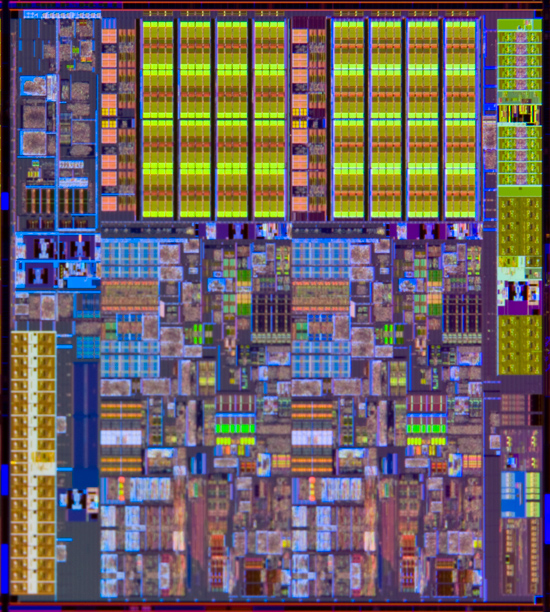
Two cores, Nehale..err Westmere-style
Technically Clarkdale isn’t Nehalem, it’s Westmere. Take Nehalem, use 32nm transistors, add in some new instructions for accelerating encryption/decryption, and you’ve got the makings of Westmere.
Clarkdale uses a dual-core Westmere and sticks it next to a 45nm Intel GMA die. That’s right, meet the first (er, second) Intel CPU with on-chip graphics. Next year we’ll see Sandy Bridge bring the graphics on-die, but until then we have Intel’s tried and true multi-chip-package to tide us over.
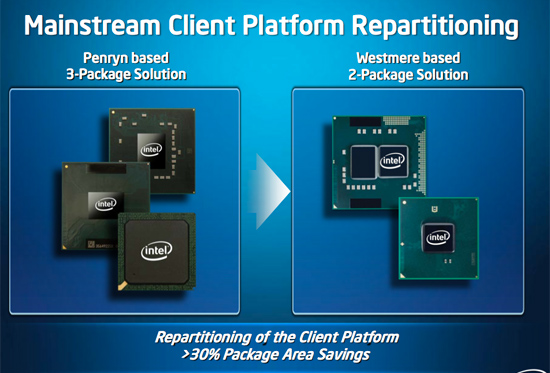
We don’t get on-die graphics yet because Intel still hasn’t switched over to its make-everything-at-the-best-process-ever strategy. The 32nm fabs are ramping up with CPU production and the 45nm fabs need something to do. Nearly every desktop and laptop sold in 2010 will need one of these 45nm GMA die, so the fabs indeed have something to do.
It’s not all rosy with Clarkdale unfortunately. Remember the memory controller that Nehalem so graciously integrated? Clarkdale kicks it off die again. The IMC is housed in the 45nm GMA die. It’s still on-package, but not on-die. The benefit is super fast memory access for the graphics core, but slower memory access for the CPU core. In fact, this is a derivative of the memory controller used in older Intel chipsets (e.g. P45/X48).
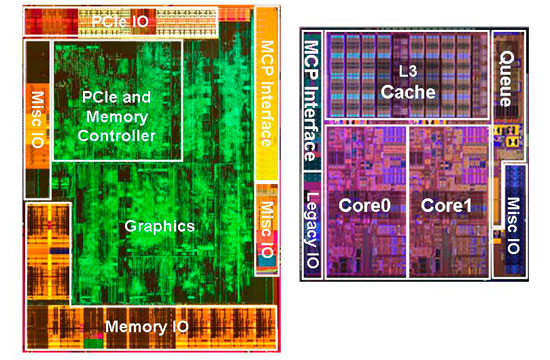
The CPU connects to the GMA die using QPI, so bandwidth shouldn’t be as big of a problem. Latency is unfortunately hurt as a result. Access times can be longer than older LGA-775 processors thanks to this memory controller design being optimized for FSB architectures. Again, the problem goes away with Sandy Bridge, but today we’re faced with it.
Like Lynnfield, Clarkdale uses Intel’s LGA-1156 socket. Clarkdale should work in all P55 motherboards, but you’ll need a BIOS update. No existing P55 motherboards route video from the socket to a VGA/DVI/HDMI connector, so you’ll need a new motherboard if you want to take advantage of the on-package graphics. Enter the H55, H57 and Q57 chipsets.
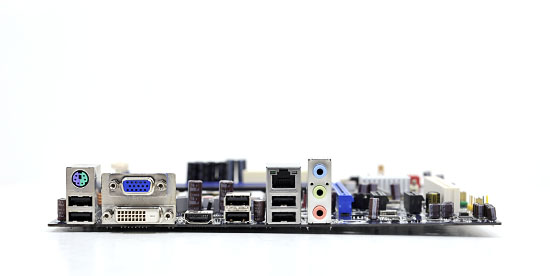
A typical H57 I/O layout
The H and Q-series of chipsets feature what Intel calls its Flexible Display Interface (FDI). This is basically a link between the CPU and the chipset that passes along video output. H5x/Q57 motherboards will have a video out on board so you can use Clarkdale’s integrated graphics.
The chipsets differ in price and features. The table below sums it up:
Support for Intel’s Rapid Storage Technology is probably the main reason you’ll want H57 over H55. The difference between H57 and Q57 boils down to security and management features. The H-series is for consumers, the Q-series is for corporate customers. Make sense?
The chips themselves are pretty straightforward. Intel is launching seven desktop Clarkdale processors (and a whole lot more notebook Arrandale chips):
| Processor | Core Clock | Cores / Threads | L3 Cache | Max Turbo | TDP | Price |
| Intel Core i5-670 | 3.46GHz | 2 / 4 | 4MB | 3.76GHz | 73W | $284 |
| Intel Core i5-661 | 3.33GHz | 2 / 4 | 4MB | 3.60GHz | 87W | $196 |
| Intel Core i5-660 | 3.33GHz | 2 / 4 | 4MB | 3.60GHz | 73W | $196 |
| Intel Core i5-650 | 3.20GHz | 2 / 4 | 4MB | 3.46GHz | 73W | $176 |
| Intel Core i3-540 | 3.06GHz | 2 / 4 | 4MB | N/A | 73W | $133 |
| Intel Core i3-530 | 2.93GHz | 2 / 4 | 4MB | N/A | 73W | $113 |
| Intel Pentium G9650 | 2.80GHz | 2 / 2 | 3MB | N/A | 73W | $87 |
The six processors labeled Core i5s and Core i3s all have the same basic architecture. You get per-core 256KB private L2s and you get a 4MB L3 cache shared among both cores (down from 8MB from the quad-core Lynnfield/Bloomfield chips). The i5s get turbo mode while the i3s do not. The i5-661 uses a higher graphics clock and has a higher TDP than the 660. Remember that these are CPU+GPU combos on a single package, so GPU clocks do vary based on model.
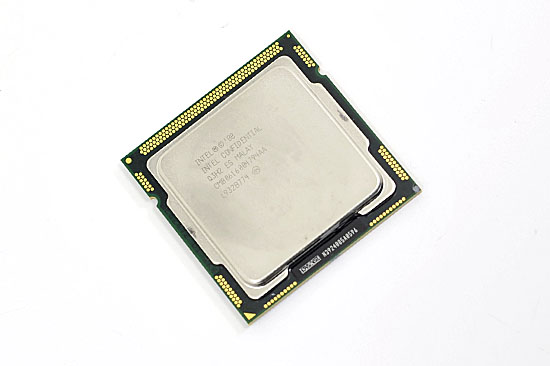
The Clarkdale lineup is honestly made up of CPUs that are too expensive. The Core i5 670, 661/660 and 650 are all priced above $170 and aren’t worth the money. The problem is Lynnfield’s turbo mode gives you high enough clock speeds with two threads that there’s no need to consider a dual-core processor. You can buy a Core i5 750, have more cores than any of these Clarkdales and run at close enough to the same frequencies for $196. Or you can buy a Phenom II X4 965 for about the same price and have much better multi-threaded performance. The chips that are most interesting are the Core i3s.
| Processor | Clock Speed | Max Turbo | |
| 2 Cores Active | 1 Core Active | ||
| Intel Core i5-670 | 3.46GHz | 3.60GHz +3.9% | 3.73GHz +7.7% |
| Intel Core i5-661 | 3.33GHz | 3.46GHz +4.0% | 3.60GHz +8.0% |
| Intel Core i5-660 | 3.33GHz | 3.46GHz +4.0% | 3.60GHz +8.0% |
| Intel Core i5-650 | 3.20GHz | 3.33GHz +4.2% | 3.46GHz +8.3% |
| Intel Core i3-540 | 3.06GHz | N/A | |
| Intel Core i3-530 | 2.93GHz | N/A | |
Turbo just isn't as interesting with only two cores. With four cores you used to have to make a tradeoff between good 4 and 2 threaded performance, but Lynnfield fixed that. No one really debates single vs. dual core anymore. The single core turbo modes are great, but aren't worth the money. Pay attention to the i3s.


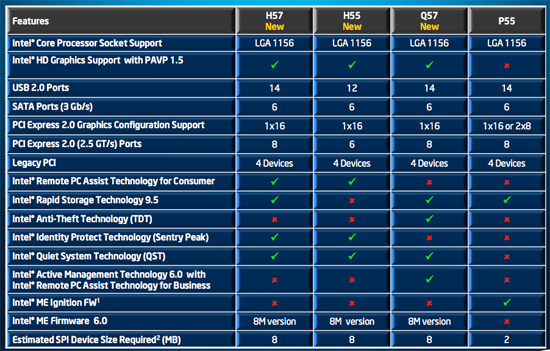








93 Comments
View All Comments
Marcin - Monday, January 4, 2010 - link
2D loadAnand Lal Shimpi - Monday, January 4, 2010 - link
The Radeon HD 5870 is quite power efficient if it's not running a 3D app. Our load tests were done using our x264 encoding benchmark to stress the CPU. That's why I used the 5870 as a companion in those benchmarks - makes overall system power consumption lower so we can better see differences between CPUs. Good job AMD :)Take care,
Anand
yacoub - Monday, January 4, 2010 - link
Intel gives us this crap instead of 32nm P55.DrMrLordX - Monday, January 4, 2010 - link
Can we see results on an i3 530 instead? Some people with ES chips are reporting that i3s are not good for much of anything over 4 ghz. Also, the vcore on your 4.8 ghz is pretty high, even with water cooling. I would not want to run an i3 at that vcore on a daily basis.The phase results are really interesting, but I have to wonder how well this chip scales given the memory speed limitations you run into at higher BCLK.
Spoelie - Monday, January 4, 2010 - link
First CPU-Z screenshot on the overclocking page shows CPU @ 1.3GHz, I don't think this is the correct shot?Rajinder Gill - Monday, January 4, 2010 - link
Speedstep and Turbo enbaled. The full load speed is 26X149 BCLK, so around 3874MHz..Spoelie - Monday, January 4, 2010 - link
True, comment on gaming benchmarks:" the Core i3s are good gaming chips - especially when you consider how far you can overclock them. "
But how would you know, not having any in-house?
Anand Lal Shimpi - Monday, January 4, 2010 - link
I've heard some very good initial results but I will be able to confirm when I get back from CES :)Take care,
Anand
marc1000 - Monday, January 4, 2010 - link
Suddenly it all makes sense. Intel would never enable 1080p decoding on Atom D510 not because of technical issues, but simply because it would kill the market for i3 even before it was released. The HTPC market does not need the i3 brute-power, but this is the only platform that will have HDMI and 1080p. If Atom D510 could do 1080p and had HDMI output then the choice for a HTPC would be a no-brainer. And excuse me, but I already have a gaming rig, so all I want right now is a HTPC to play PC content on my TV. And I won't buy a core i3 to do that, but I would buy a decent Atom board if it had the required HDMI and 1080p... so, for me, no HTPC for now...Kjella - Monday, January 4, 2010 - link
That is why the old Atom + ION exists, excellent setup with 1080p acceleration and HDMI out. If you don't want it, wait until AMD or VIA/nVidia manages to work something out.